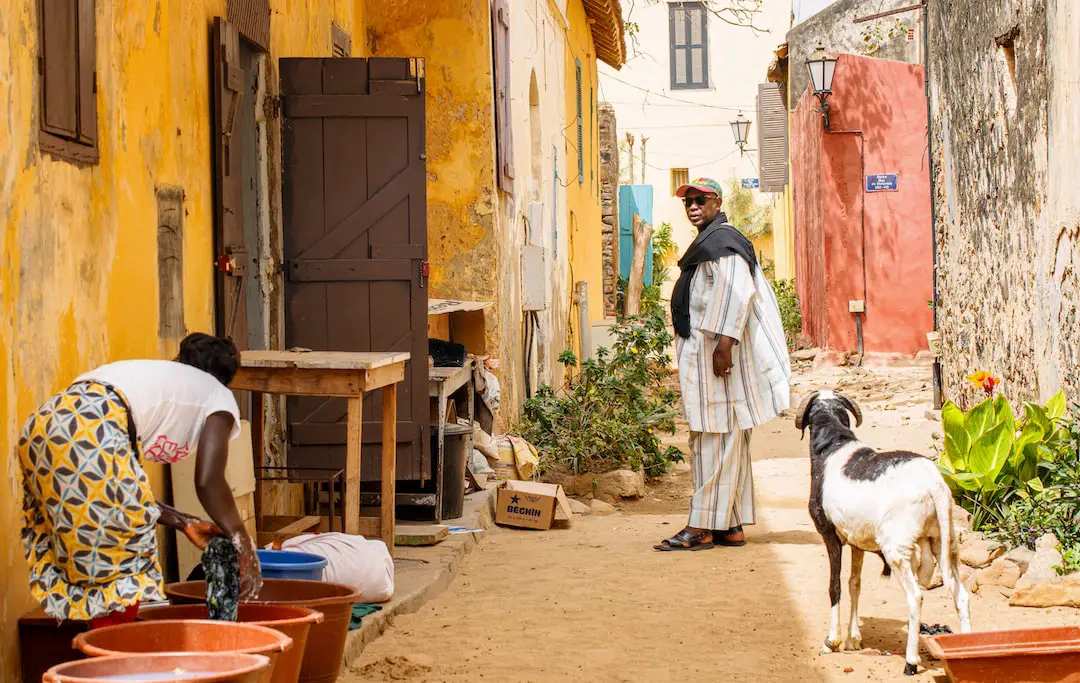
Imagine strolling through the bustling streets of Dakar, where the hum of daily life is set against a backdrop of architectural marvels that tell a story of a city ever-evolving. Dakar’s architecture is a tapestry woven from threads of its colonial past, African heritage, and forward-looking modernism. It’s a feast for the eyes, a blend of the old and the new, standing side by side in harmonious contrast.
The Roots of Dakar’s Architectural Identity
The story of Dakar’s architecture begins with its indigenous influences, visible in the traditional huts and dwellings of the Lebou people, the original inhabitants of the Cape Verde Peninsula. These structures, made from local materials like wood and straw, were the first to dot the landscape.
As the Portuguese set foot on Senegalese soil in the 15th century, they left their mark with the introduction of European-style buildings. However, it was the French colonial period, starting in the mid-19th century, that truly shaped Dakar’s urban landscape. Colonial architecture brought with it the grand boulevards and stately buildings that still stand in the Plateau district.
These buildings, with their ornate facades and wrought-iron balconies, reflect a time when Dakar was a center of French administration in West Africa. The Presidential Palace, with its pristine gardens and imposing presence, is a prime example of this era’s architectural legacy.
Independence and Innovation
With independence in 1960 came a surge of national pride and a desire to express Senegal’s identity through architecture. The first president, Léopold Sédar Senghor, championed the concept of “Negritude,” which sought to celebrate African culture and aesthetics.
Architects began to incorporate African motifs and materials into their designs, leading to a unique blend of modernist structures with traditional elements. The Dakar Grand Mosque, completed in the 1960s, stands as a testament to this period, combining Islamic architectural principles with local artistry.
During this time, the city also saw the rise of brutalist architecture, a style characterized by raw concrete and geometric shapes. The IFAN Museum of African Arts is a striking example, showcasing how this style can serve as a canvas for African cultural expression.
Contemporary Dakar: A Fusion of Styles
Today, Dakar is a city that refuses to be pigeonholed into a single architectural style. It’s a place where you’ll find sleek glass towers rising alongside colonial relics and vibrant markets nestled in the shadows of brutalist blocks.
New developments, like the futuristic Diamniadio Lake City, are set to redefine the city’s skyline. These projects aim to address the growing population and urban sprawl, offering sustainable and smart urban solutions.
Yet, amidst this rush towards the future, there’s a concerted effort to preserve the architectural heritage that gives Dakar its unique character. Restoration projects in the historic Kermel Market and the Medina district ensure that the soul of the city remains intact.
Living Monuments: Dakar’s Architectural Landmarks
Some buildings in Dakar are more than just structures; they’re living monuments to the city’s history and culture. The House of Slaves on Gorée Island, with its haunting Door of No Return, is a poignant reminder of the transatlantic slave trade.
On the other end of the spectrum, the African Renaissance Monument, towering over the city, symbolizes a continent looking confidently towards the future. This colossal statue is a bold statement of African pride and ambition.
And let’s not forget the everyday architecture—the homes, shops, and street corners where life unfolds. These spaces may not make it onto postcards, but they’re where the true heart of Dakar beats.
Challenges and Opportunities
As Dakar continues to grow, it faces the challenges of any major city: balancing development with preservation, accommodating a burgeoning population, and ensuring sustainability. The city’s architects and planners are tasked with the monumental job of writing the next chapter in Dakar’s architectural story.
There’s a push for green building practices and infrastructure that can support the city’s growth without sacrificing its environment or heritage. The hope is to create a Dakar that honors its past while embracing the possibilities of the future.
FAQs
- How has Senegalese culture influenced Dakar’s architecture?
Senegalese culture has infused Dakar’s architecture with traditional motifs, materials, and techniques, blending them with modern and colonial styles to create a unique urban tapestry.
- Can you visit historical architectural sites in Dakar?
Absolutely! Dakar is rich in historical sites, from the colonial-era buildings in the Plateau district to the House of Slaves on Gorée Island. Many of these sites are open to the public and offer a glimpse into the city’s layered history.
- What are some examples of sustainable architecture in Dakar?
Projects like Diamniadio Lake City showcase sustainable architecture in Dakar, with a focus on energy efficiency, green spaces, and smart technology to create a livable and eco-friendly urban environment.
Conclusion
Dakar’s architecture is a living, breathing chronicle of its history, culture, and aspirations. From the remnants of colonial rule to the bold statements of independence and the innovative designs of today, the city’s buildings tell a story of resilience and transformation. As Dakar continues to evolve, its architecture remains a testament to the spirit of its people—rooted in tradition, yet always reaching for the stars.
For those of us who’ve walked its streets and experienced its architectural wonders firsthand, Dakar is not just a city; it’s a journey through time, etched in stone, concrete, and glass. And for those yet to discover its charms, prepare to be captivated by a city that stands as a proud beacon of African progress and creativity.
Whether you’re a real estate investor, a homeowner, or simply an admirer of urban landscapes, Dakar’s architecture is a narrative worth exploring. It’s a story that continues to unfold, inviting us all to be a part of its next exciting chapter.